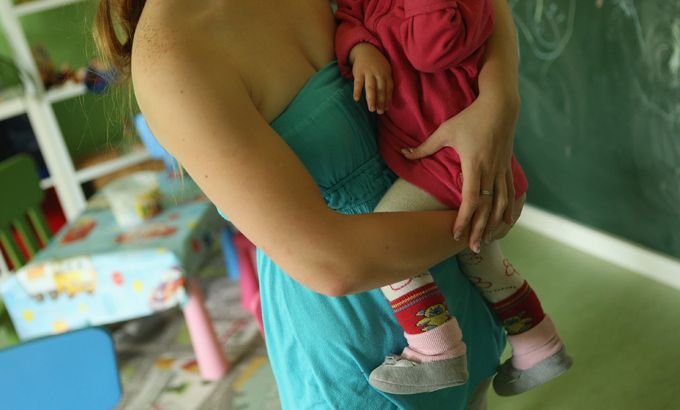
The American single mother’s burden
We look at why single parents fare worse in the United States than in other similarly industrialised nations.
Unmarried mothers are now the new normal among young women in the United States.
According to a Census Bureau report out this month, six out of every 10 women who give birth in their early 20’s are unmarried.
Keep reading
list of 4 itemsUS imposes new sanctions on Iran after attack on Israel
A flash flood and a quiet sale highlight India’s Sikkim’s hydro problems
Why is Germany maintaining economic ties with China?
The report also found that – across all ages – single motherhood has increased 80 percent since 1980.
This is really the perfect storm for single parents, that, because our system in the United States is so stingy, really fall through the cracks .... In the US, 50 percent - so half of children in single parent families - are poor .... The poverty rates are exceptionally high.
While the intervening years have also seen an increase in the social acceptance of single parenthood, there are still big divides when it comes to race and education.
The rate of unmarried mothers is much higher among African Americans and Native Americans compared to whites or Asians. And the unmarried birth rate goes down the more educational opportunities a woman has.
A report released last year by Legal Momentum, a women’s legal defence and education fund, found that single mothers in the US have the highest employment rate compared to other industrialised nations. But they also have the lowest wages.
And unlike other industrialised countries, single mothers in the US have little help from the government. Head Start is among the few public programmes which provides educational and social services to low income families. But as Yvette Sanchez Fuentes, the director of Head Start, says, it serves only a small number of those in need.
The US House of Representatives this week passed the Working Families Flexibility Act. The bill allows private sector employees to choose between compensatory time off and cash payment for overtime work.
The Republican majority in the House says workers will get to spend more time with their families. Democrats and labour unions say that employers will be able to pressure workers into taking compensatory time off instead of overtime pay.
They also argue that such a measure gives employers the incentive to substitute paid leave with a system in which workers earn their time off by working overtime.
The deficits that single mothers have are money and time. And if you can't afford high quality child care - and very few people can -and you don't have time because you are working at a low wage job that isn't flexible, doesn't permit time off and can fire you for missing a day of work, then the complications add up.
The White House has said it will veto any such legislation, and it is unlikely to be passed by the Democratic-majority Senate.
A study by Legal Momentum compared US single-parent families with single-parent families in 16 other high-income countries. It concluded that US single-parent families are the worst off.
Twenty five percent – or one in four US workers – are in low-wage jobs, while the average among the other countries is 14 percent. And 40 percent of single parents in the US have low-wage jobs.
Meanwhile, 66 percent of single mothers were employed in a month in the US in 2011 – higher than the average among comparison countries.
All the countries including the US allow new parents to take time off from their jobs with the assurance that they can return at the end of their leave. But the US is alone in not legally ensuring paid leave for a portion of this period.
All the countries except the US provide a minimum number of weeks of paid annual leave. Workers in all the countries, except the US and Canada, are entitled to paid sick leave.
Ten of the 16 comparison countries also provide paid leave to care for a sick child; the US does not.
And in the 13 comparison countries that are members of the European Union, pre-primary education is almost universally available for children by ages three and four – easing employment barriers for single parents. But in the US, only 44 percent of four-year olds, and 20 percent of three-year olds were enrolled in a public kindergarten or nursery school programme in 2010.
So, why is the US such a difficult place for single mothers compared to other similarly industrialised nations?
To discuss this, Inside Story Americas with presenter Kimberly Halkett is joined by Laurie Maldonado, co-author of the report Worst Off: Single-Parent Families in the United States; Sarah Jane Glynn, a sociologist and Associate Director of the Women’s Economic Policy program at Center for American Progress; and Philip Cohen, a sociology professor at University of Maryland, who also runs a blog called Family Inequality.